#Absolute unit
Explore tagged Tumblr posts
Text

Barsboldia drawn in the style of 18th century cattle paintings
#absolute unit#she's paleounit-maxxing#prized hardrosaur of the year award goes to#her#paleoart#paleoartist#dinosaur#barsboldia#hadrosaur#pimsriart2024#pimsriart
23K notes
·
View notes
Text
so, this is happening:

March 2

March 8

March 11th

March 14

March 15

March 18th

March 24
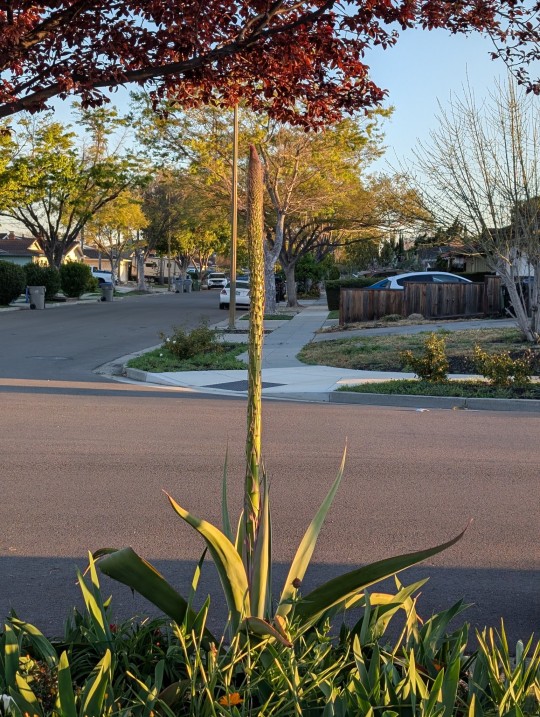
March 25
#garden#flowers#agave#agave plant#quiote#don quiote#up up up#plant#plants#plont#plonts#absolute unit#omg#wow
1K notes
·
View notes
Text
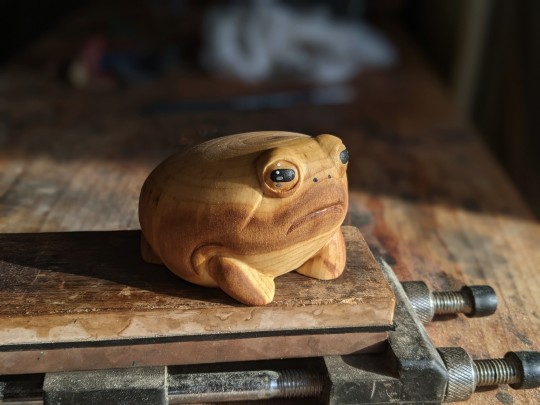
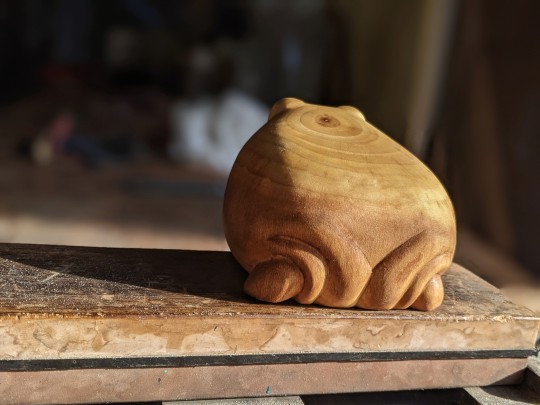


Mood
7K notes
·
View notes
Text


Americano. How is she so round now
856 notes
·
View notes
Text
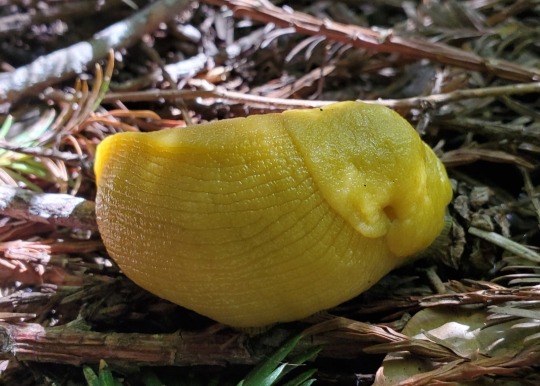
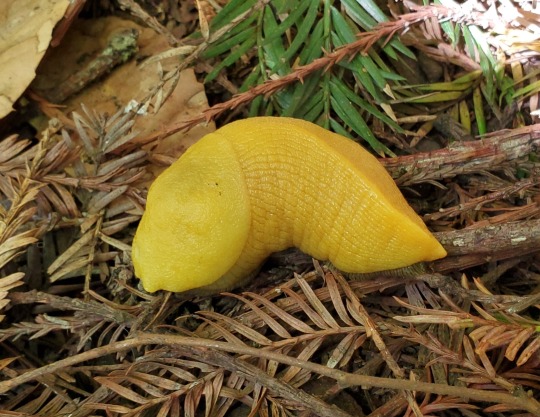
Is a chonk. Probably the chonkiest nanner I've ever seen 🍌
(banana slug in Northern California redwood forest)
#chonk#oh lawd they comin#what a chonk#absolute unit#heckin chonker#banana slug#nanner#🍌#nature#nature photography#animals#gastropods#thick and juicy#redwood forest
3K notes
·
View notes
Text

🌻Spring🌻
Wee Carolina wren pondering the sunrise.
#birding#nature#my photos#ornithology#oc#bird photography#photooftheday#birds#bird watching#nikon#backyard birds#bird#birdblr#birdwatching#wild birds#birblr#orb of borb#borb#round#absolute unit
233 notes
·
View notes
Text
For Behemay, Vincent…Valentine 🐾⚰️


#behemoth#behemay#ff7#final fantasy 7#Vincent Valentine#truly a gorgeous behemoth design#I love that everytime they make a Galian beast it’s just….different#adds more variety and variance with artist interpretations#u admire how VINCENT flavored this beast is#absolute unit#I designed his outfit too#it’s beauty and the beast vibes ✨#drawn on….my iPad using csp#expect for FF7 I’ve been hyperfixating for over a year on this edgelord#monster#beast
174 notes
·
View notes
Text

Graceful countryside with absolute unit.
632 notes
·
View notes
Text

so cute, so fluff
346 notes
·
View notes
Text

Absolute unit of a pigeon.
Screen capture taken from a live stream by NatureTec on youtube.
#NatureTec#european birds#live stream#bird watching#wood pigeon#bird#birds#pigeon#nature#borb#absolute unit#chonker#borbs#birblr
215 notes
·
View notes
Text

i think my kobold is seeing multiple dragons
669 notes
·
View notes
Text


I didn't want to draw 50 legs and feet I think it's telling. 🫠
#rest in peace quinn my queen#absolute unit#lobotomy corporation#lob corp#project moon#lobotomy corp agent#blue star#artists on tumblr#~vampirarts
104 notes
·
View notes
Text
It's big, it's strong, its scaly, it's this week's Wet Beast Wednesday topic! An arapaima, also known as a pirarucu or paiche, is any of four species of fish in the genus Arapaima in the order of bony-tongued fish. There is som ongoing debate about the classification of the species, so to keep thing simple, I'm going to use the most common species names of Arapaima gigas (the type species and most well known, and the one with the most confusion about its classification), Arapaima agassizii, Arapaima leptosoma, and Arapaima mapae. Because A. gigas is the most well-studied of the species, unless I say otherwise you can assume everything I say in this post applies to it.

(image: an arapaima)
Arapaimas are bony fish that retain several primitive traits, causing them to sometimes be identified as "living fossils". They are most notable for their size, with A. gigas being a contender for the largest freshwater fish in the world. The maximum recorded size for one was 3.7 meters (10 ft) and 200 kg (400 lbs), but most get to around 2 meters (6.6 ft) long and 200 kg (440 lbs). That average length is decreasing as overfishing of the largest individuals is resulting in a selective pressure for smaller sizes. In addition to their size, they are extremely strong and can move fast if needed. Arapaima are fully capable of leaping out of the water if disturbed or they feel their current pond in unsuitable. Because of their strength, specimens in captivity must be handled with care as they can easy break bones if they slap someone. They live in rivers and lakes in South America, where they are often the top predators.
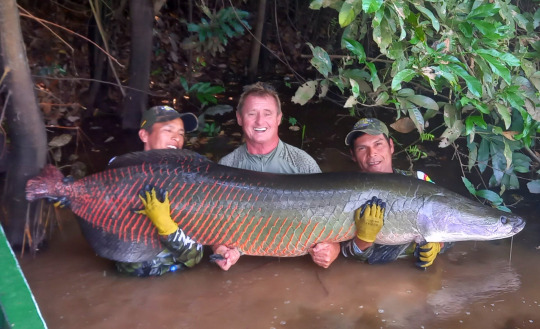
(image: several anglers with an arapaima)
Arapaimas are obligate air-breathers and will drown if they can't get to the surface to breathe. This is accomplished with a specialized swim bladder. The swim bladder is filled with highly vascularized tissue, letting it act like a lung. This pseudo-lung opens into the mouth using a modified gill arch known as the labyrinth organ. Arapaima gills are too small to sustain them, but they can supplement their oxygen intake with the gills. Juveniles are born exclusively using their gills and transition into air-breathers shortly after hatching. Arapaimas can survive up to a full day out of the water. They typically surface to gulp in air every 15-20 minutes. Breathing makes a loud gulping sound that anglers use to target them.
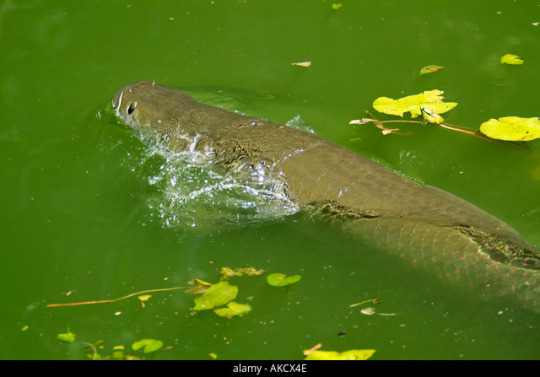
(image: an arapaima at the surface)
Because of their ability to breathe air, arapaimas are top predators in low-oxygen environments. Non-air breathing fish are forced to slow down in water with low levels of dissolved oxygen as they can't get enough oxygen through their gills. Since Arapaimas breathe air, they can easily chase down lethargic smaller fish. They are especially potent predators during the low season, when water levels lower. A combination of rotting vegetation reducing oxygen levels and ponds getting cut off from rivers and losing a supply of oxygen lets the arapaima reign supreme. Arapaimas are primarily predators that feed on smaller fish, though they will hunt other types of animals and eat fruits and seeds. Even land animals aren't safe as arapaimas have been known to launch themselves out of the water to catch animals near the shore. A combination of sharp teeth and their bony tongues are used to debilitate prey.
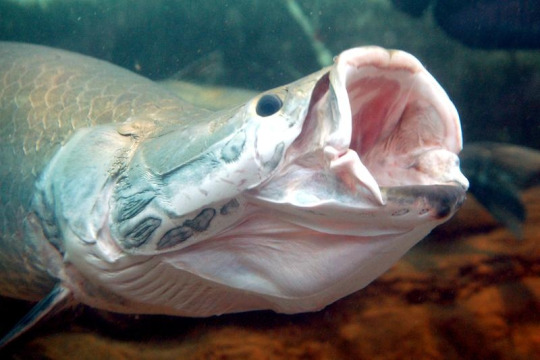
(image: an arapaima with its mouth open)
Not content with powerleveling their attack stat, arapaimas also have excellent defense. Their scales have been compared to bullet proof vests. Each has a hard, mineralized outer layer over multiple layers of collagen fibers. These layers are all oriented at an angle to each other to provide extra strength. This orientation of layers is called a Bouligand-type arrangement and is similar to how plywood is assembled. The harder outer layers and flexible inner layers work together to allow for both strength and flexibility. These scales help provide protection form large predators such as caiman and small threats like biting piranha. They also like provide protection from other arapaima, as the fish are aggressive and will fight each other.

(image: a diagram showing the composition of arapaima scales. source)
You probably wouldn't expect a swimming tank of an animal to be a good parent, but you'd be wrong. Arapaimas work together in mated pairs to build nests for their eggs, then cooperate to guard the nest. Once the eggs hatch, the male will practice mouth brooding, keeping his young safe in his mouth. The female will also help by patrolling the area around the male to ward off predators. They secrete pheromones from their heads to ensure the young don't swim too far away. Eggs are laid either in in the low season or as water levels are starting to rise, ensuring that the young become independent during the high season.
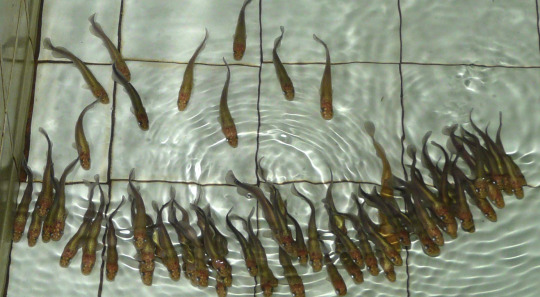
(Image: baby arapaimas)
Arapaima are classified as "data deficient" by the IUCN. This means there isn't enough data to properly assess their conservation needs. They are known to be threatened by overfishing. Arapaima make up a large part of the diet of many South American populations. Habitat loss and pollution are also believed to threaten them. They have been introduced to many areas out of their native range and are an invasive species in placed like Florida, Malaysia, and India.
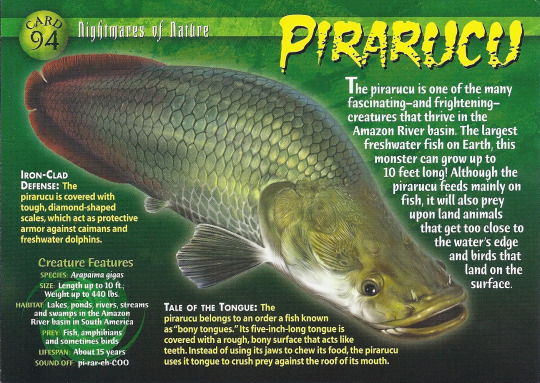
Does anyone else remember these cards? (image: the arapaima card from Weird n' Wild Creatures)
#wet beast wednesday#fishblr#fish#biology#zoology#ecology#animals#aquatic biology#animal facts#absolute unit#arapaima#pirarucu#paiche
1K notes
·
View notes
Text

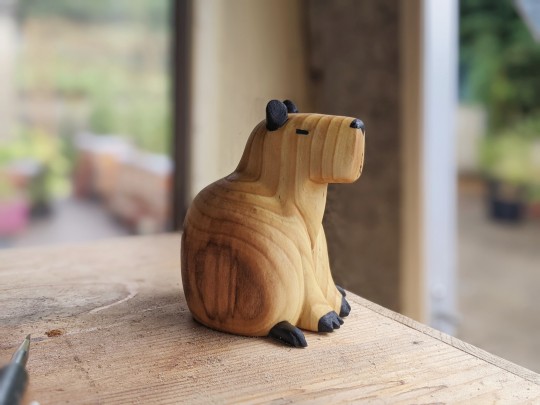
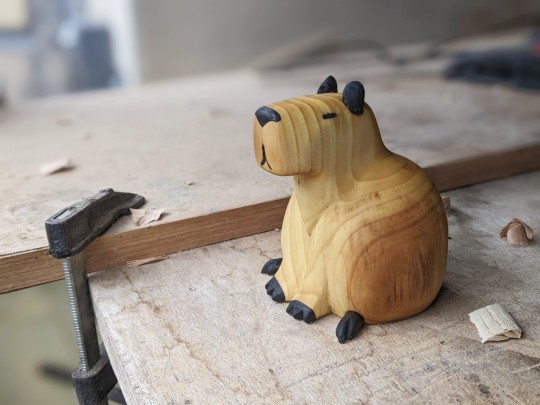
New capybara just dropped
7K notes
·
View notes
Text

Punisher 1989 stuff

60 notes
·
View notes
Text

671 notes
·
View notes